A Guide to Distinguishing High-Quality Golden Pearls From Lower-Quality Ones

The rich, warm hue of golden pearls makes them a popular kind of farmed pearl. These pearls, created when a portion of tissue or some foreign material, inserts into the mollusk makes the pearl—naturally, a pearl forms when the mollusk produces layers of nacre around the foreign object.
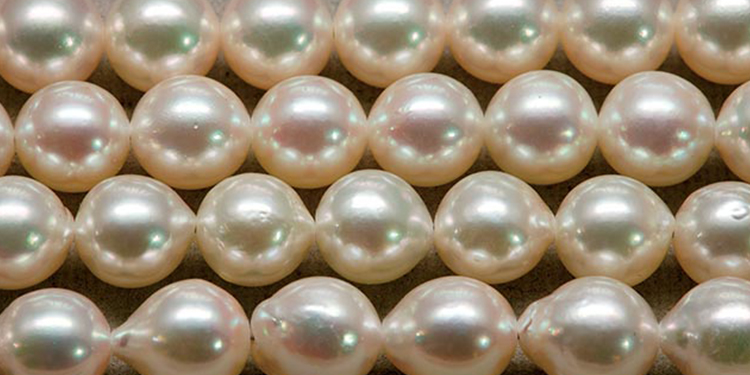
The mollusk species that makes golden pearls, the gold-lipped oyster, commonly known as the Pinctada maxima, is responsible for the pearls' distinctive hue. Most of the oceans of Australia, the Philippines, and Indonesia serve as home to this particular type of oyster. Due to their low production compared to other forms of pearls, we consider golden pearls rare and unique.
They are also more challenging to grow than other kinds of pearls because the oysters that generate them are highly reactive to environmental changes. To develop and produce high-quality pearls, they need a set of circumstances that include the ideal temperature, clean water, and certain nutrients.

Due to this, producing golden pearls is more labor- and money-intensive than producing other varieties of pearls. Golden pearls are extremely valuable to collectors and jewelry lovers due to their distinctive hue and scarcity.
Anybody who wishes to recognize and appreciate pearls, whether they are consumers, collectors, or members of the jewelry business, must have a thorough understanding of the variables that determine their quality.
Understanding the quality elements makes it easier for people to choose the pearls they buy or collect since they determine the pearl's overall worth and appeal.
Luster and Color
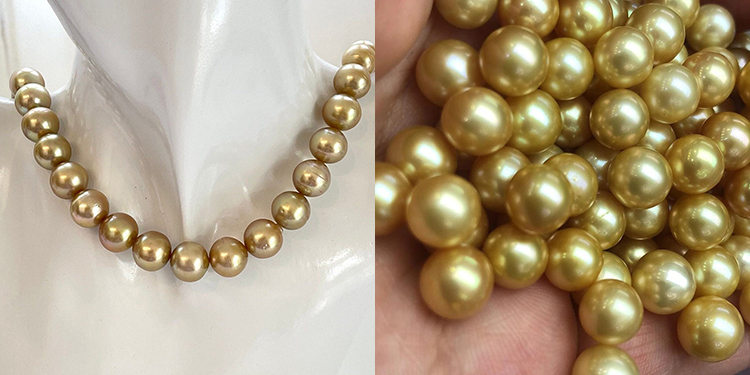
Luster is among the most crucial elements in judging the grade of golden pearls. It describes the kind and amount of light a pearl's surface reflects, giving it its particular shine and brightness. Luster is crucial since it is a key marker of a pearl's excellence, beauty, and worth.
A golden pearl of superior quality should have a brilliant, reflecting shine that highlights its hue and entire beauty. The nacre's quality, the surface's smoothness and cleanliness, the size, and the pearl's form all affect a pearl's brilliance.
Golden pearls may range in hue from light to pale yellow, dark gold, to deep yellow. Several elements influence the shades of the golden pearls, including the lighting and the backdrop you view the pearl against.

Rich, warm golden hue with a tinge of pink or red overtones is the perfect color for golden pearls. A golden pearl's hue depends on the species of mollusk that created it and the habitat in which it matured.
When it pertains to illumination, natural sunshine is ideal since it gives the most realistic depiction of a pearl's genuine hue. Artificial illumination, such as incandescent or fluorescent lights, further influences the pearl color's appearance.
The pearl's color perception can also be affected by the background with which you view it. When you observe a golden pearl, for instance, it can look more profound and more saturated over a dark background, whereas it might seem less saturated and lighter against a bright background.
In order to acquire the most realistic portrayal of the color of the pearl, it is crucial to take into account the color while choosing a golden pearl in various lighting situations and against diverse backgrounds.
Size and Shape
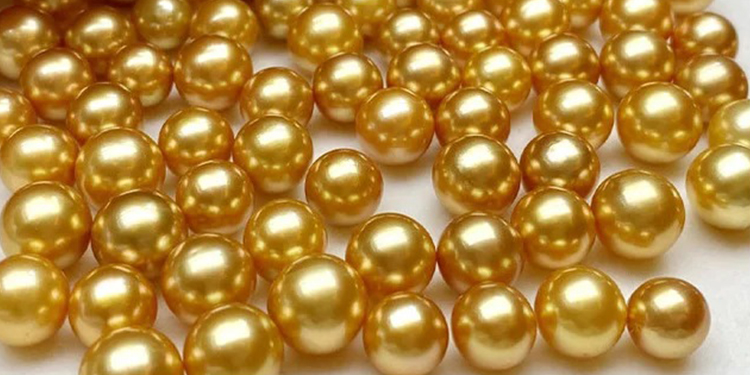
Golden pearls are available in a variety of sizes and forms, much like other varieties of pearls. The shape and size of a golden pearl can significantly influence its quality and worth. Among the most critical aspects that determine a pearl's worth is its size.
Golden pearls can be very little, with a diameter of less than 1mm, or quite big, with a diameter of 20mm or more. Due to their rarity and difficulty in cultivation, bigger golden pearls are often more costly than smaller ones. Moreover, larger pearls have more surface area, allowing more light to refract and reflect, improving their brilliance and overall look.
Another crucial element that impacts a golden pearl's value is its shape. Many forms, such as round, semi-round, baroque, and circled, are possible shapes assumed by golden pearls. Due to their rarity and difficulty in cultivation, round pearls are the most expensive. In contrast to baroque and circular pearls, which are more prevalent and less expensive, button-shaped and oval pearls are costly.
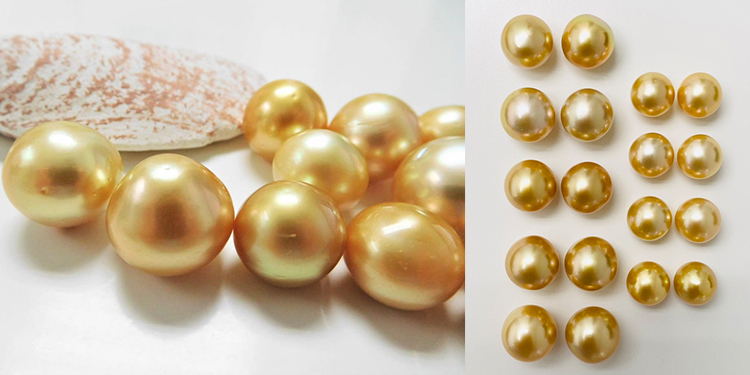
With an uneven form, Baroque pearls can be quite valuable if they have a distinctive and lovely shape suitable for their intended function. Jewelry designers, for instance, may be quite interested in obtaining baroque golden pearls with a flame or teardrop form to utilize in creating distinctive and one-of-a-kind jewelry.
Ultimately, a golden pearl's shape and size play a significant role in determining its quality and worth. Although smaller, unevenly shaped pearls are less attractive, more significant, round pearls are often the most precious. Nonetheless, the distinctiveness of a pearl's shape, particularly for baroque pearls, may make them extremely valuable to jewelry aficionados and collectors.
Surface Quality

There are several qualities to take into account while searching for high-quality golden pearls. High-quality golden pearls should have the following qualities when it comes to their surface:
Uniformity
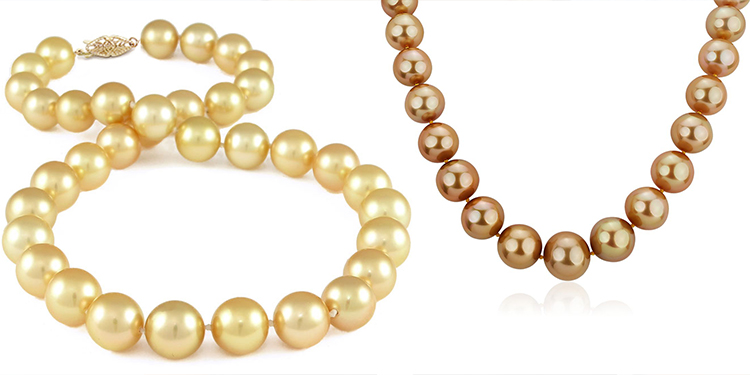
A golden pearl of the superior grade should have a homogeneous surface. Any discernible variations in tone or color between the pearl's various components may be a sign of uneven development or other problems that might lower the pearl's value.
Smoothness
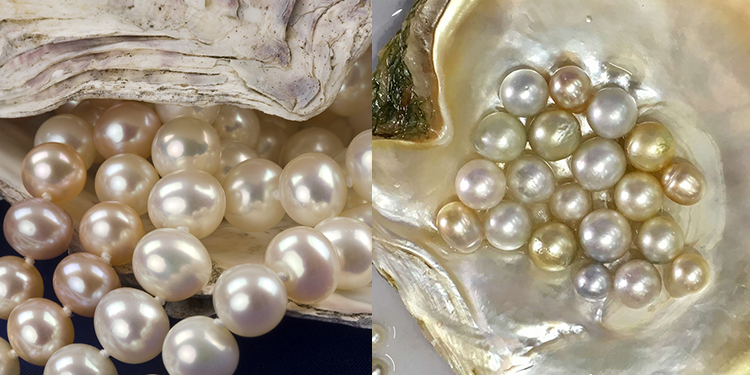
The surface of a high-quality golden pearl should be flawless, with no obvious lumps, fractures, or flaws. The uniform distribution of light reflection on the pearl's smooth surface enhances its shine and attractiveness.
Orient
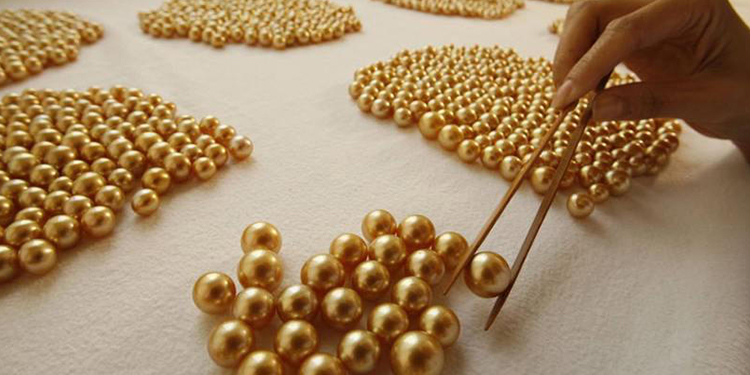
A rainbow-like surface phenomenon called iridescence, or orient, can also be seen in high-quality golden pearls. As light waves travel through the nacre layers that cover the pearl's surface, they collide and produce this orient.
Cleanliness
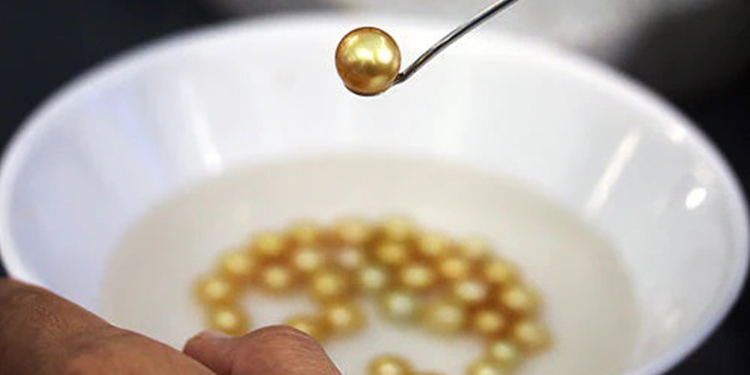
A premium golden pearl should have no obvious blemishes or stains on its surface. Any flaws on the pearl's surface might diminish its attractiveness and lower its worth.
The brilliance and worth of golden pearls can be diminished by various faults and imperfections, just as with other pearls. While choosing high-quality golden pearls, keep an eye out for the following typical faults and imperfections:
Cracks

Cracks are splits or flaws in a pearl's surface that can result from abrasion or stress when the pearl is maturing. Cracks can dramatically lower the value of pearls and impair their structure.
Bumps
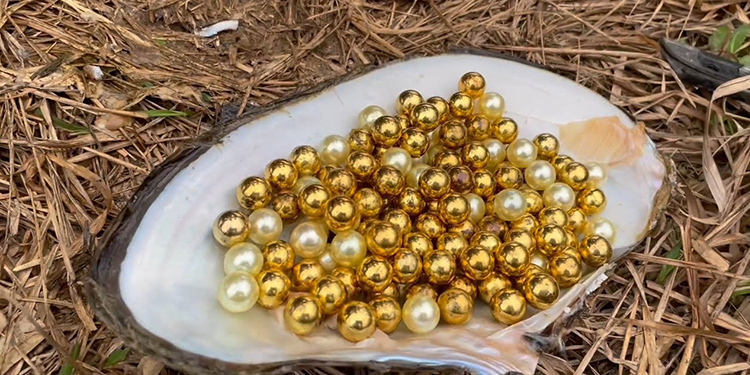
We articulate little protrusions known as bumps on a pearl's surface to abnormal development or damage. The surface of the pearl may seem uneven due to these blemishes, which can further lower its worth.
Discoloration
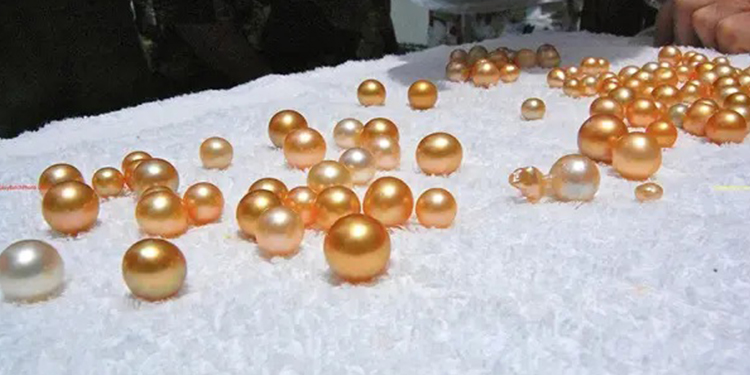
Discoloration happens when a pearl's surface appears discolored, or the nacre tinted unevenly. Discoloration can lower the value of a pearl by making its surface seem dull or uneven.
Pits
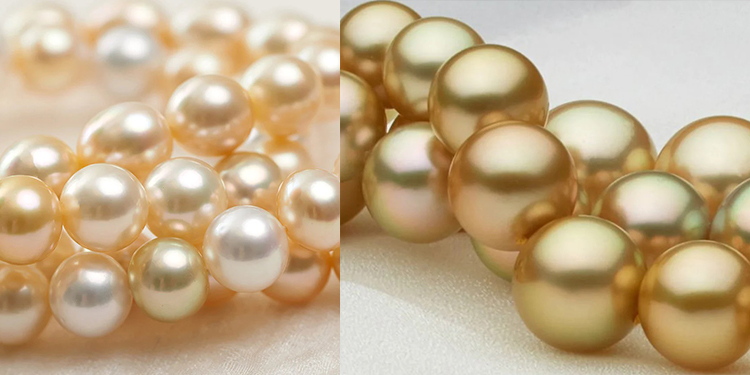
Pits are minute indentations or depressions that can appear on the surface of a pearl due to natural nacre imperfections or pearl damage. They can devalue a pearl by giving it a rough appearance on the surface.
Uneven Shape
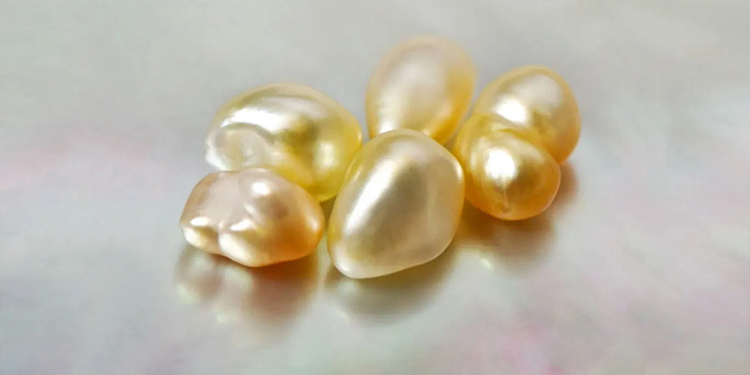
Asymmetrical or unevenly shaped pearls may have a surface that diverts attention from their value and appeal. A high-quality golden pearl should exhibit a uniformly smooth surface.
Matching and Uniformity
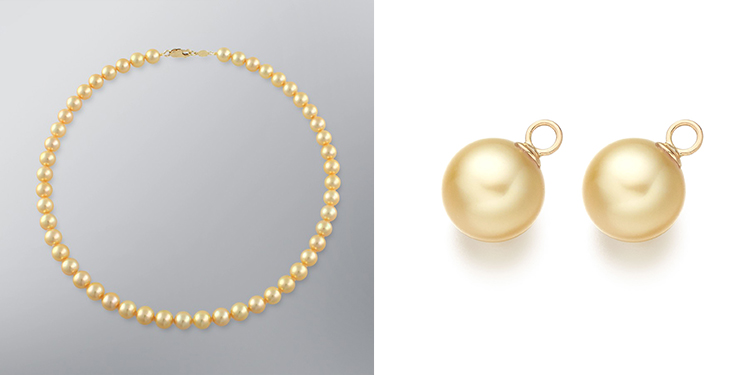
Uniformity and matching are critical variables in evaluating the worth of pairs of golden pearls. A couple of golden pearls matched pair due to their matching qualities, such as size, shape, color, and shine.
Matching makes sure that each pearl in a set complements the others, resulting in a beautiful and unified look. A set of matching golden pearls displays a harmonious appearance that raises their total worth and attraction.
Another essential component of a string of golden pearls is uniformity. When we talk about the properties of pearls, we're talking about how consistent their shine, size, shape, and color are. Pearls with consistent sizes and shapes have a more even and polished look, which raises their value and allure.

A set of consistent and well-matched golden pearls may fetch a greater price than one without these characteristics. It takes considerable effort and time to choose, sift, and arrange a set of pearls that match and are uniform; thus, they are more precious and desired.
Moreover, a mismatched or uneven pair of golden pearls may look disorganized and unappealing, which can considerably lower its value.
Finally, while estimating the worth of a pair of golden pearls, matching and homogeneity are essential considerations. A unified appearance with comparable features, such as size, shape, color, and shine, is crucial when distinguishing a pair of high-quality golden pearls.
Nacre Thickness
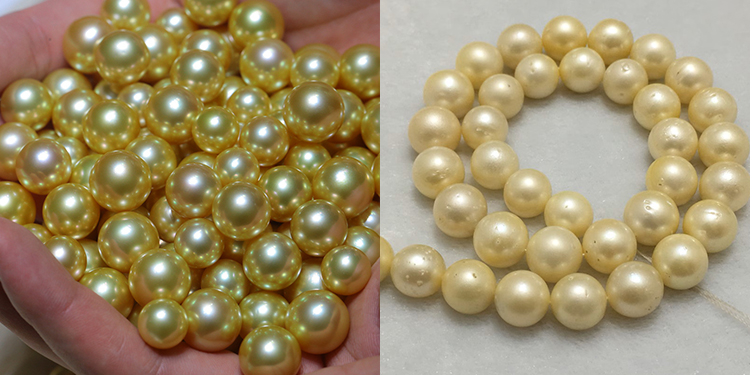
A significant factor affecting the pearl's toughness, radiance, and longevity is the thickness of the nacre layer. The mollusks that produce pearls release nacre, an iridescent, shiny substance.
Generally speaking, pearls with thicker nacre layers are of more outstanding quality and more resilient than pearls with thinner nacre layers. Thicker nacre layers are more resistant to damage and discoloration over time and can sustain more significant wear and strain.
It might be difficult to identify pearls with dense and consistent nacre, but there are certain characteristics you can check for to help establish their quality. These are some hints for identifying pearls with thick, homogeneous nacre:
Check for a High Sheen
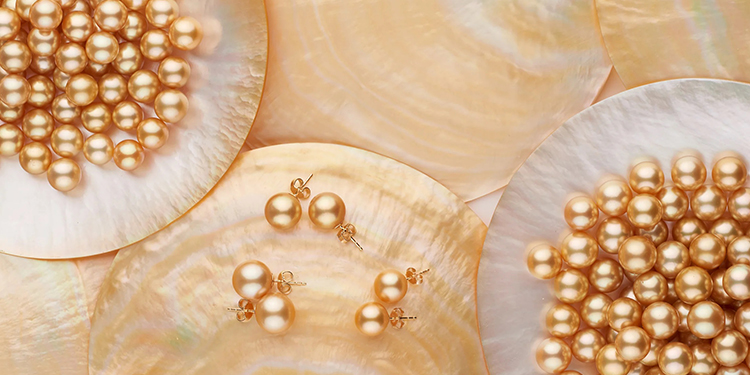
Pearls with dense nacre layers have a significant luster. The sheen should be dazzling and brilliant, with a mirror-like appearance. A pearl with a drab or matte look may have a thin nacre layer.
Inspect the Weight
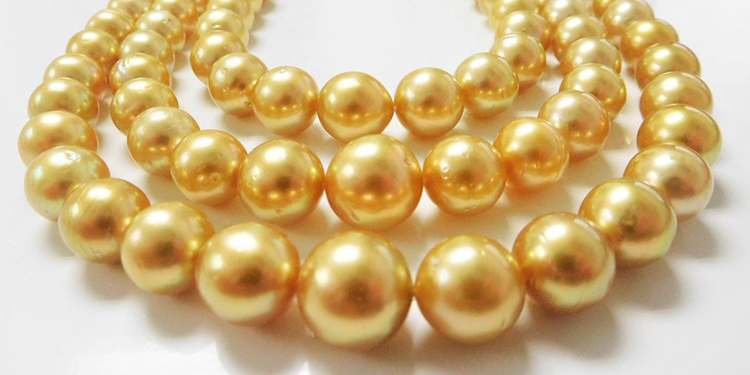
Pearls with thicker nacre layers are heavier than pearls with thinner nacre layers. Take note of the weight of the pearl in your palm to see whether it feels firm.
Examine the Surface for Flaws

Surface faults, such as blemishes, pits, or fissures, are less common in pearls with extensive nacre layers. Scrutinize the pearl's surface for flaws and ensure it is flawless and devoid of noticeable blemishes.
Check the Color
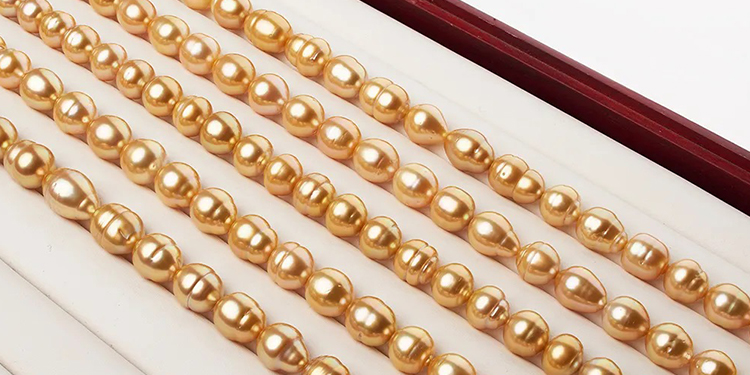
A constant and even hue pearl may imply a dense and homogenous nacre layer. Look for pearls with a uniform tint and no visible deterioration or blemishes.
Appraisal and Certification
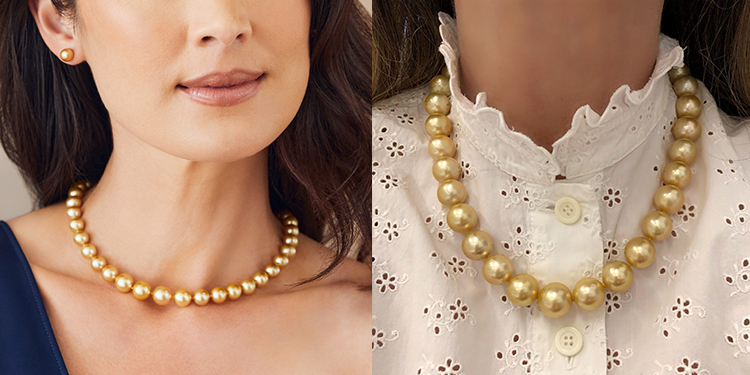
Obtaining certification and expert assessment for golden pearls is vital for various reasons. Some of the main reasons include the following:
Authenticity Check
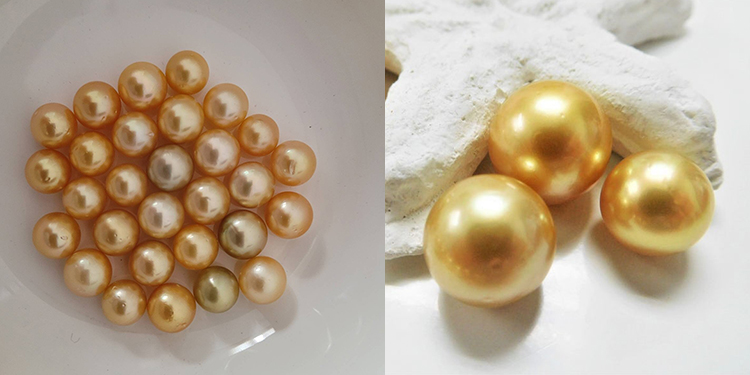
Expert assessment and certification can confirm the genuineness of your golden pearls. This check is vital if you intend to resell your pearls or protect them against harm or destruction.
Credibility
Professional assessment and certification from a respectable institution may give your pearls legitimacy and boost their worth. Collectors and buyers are more prone to believe in the authenticity and grade of pearls that have been assessed and confirmed by an expert.
Quality Control
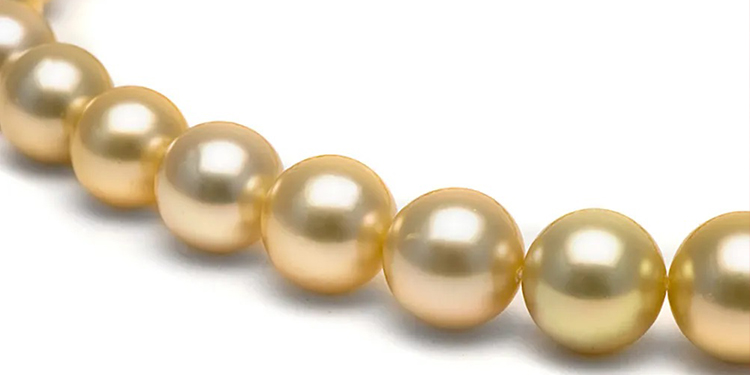
A professional assessment and certification can assist you in determining the condition of your golden pearls. A skilled appraiser may inspect the pearls and offer information on their nacre thickness, shape, size, color, luster, and other qualities that determine their value.
It might be difficult to track out trustworthy appraisers and certifiers of golden pearls, but you can try a handful of measures to make the search easier. The following hints will assist you in locating trustworthy certifiers and appraisers for your golden pearls:
Research Credentials
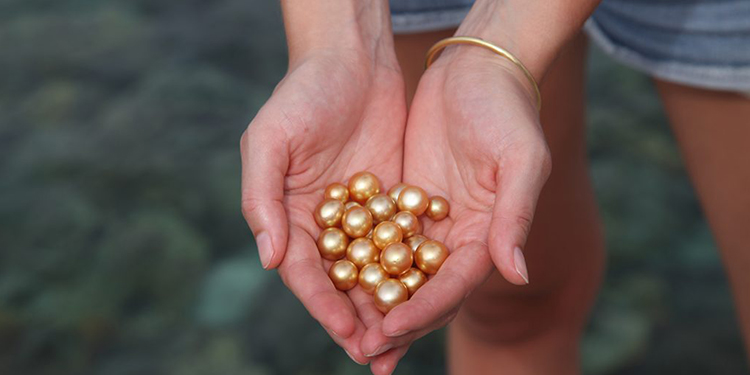
Seek for appraisers and certifiers who have earned accreditation from respected institutions like the American Gem Society or the Gemological Institute of America (GIA). These groups have rigid requirements for training and experience, and their members must uphold a stringent code of ethics.
Examine Reviews
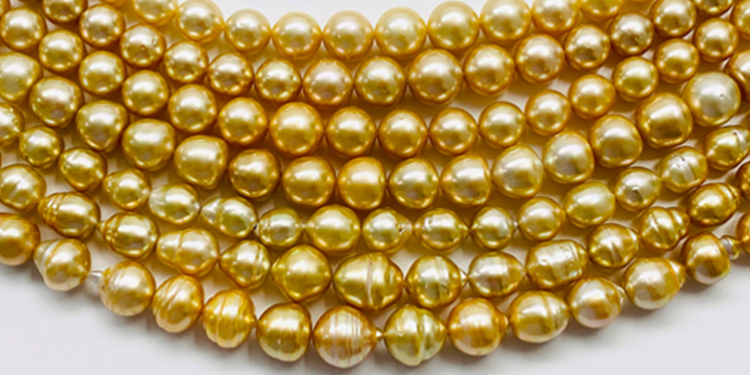
Seek out certifiers and appraisers with a solid track record and a reputable reputation in the marketplace. You may look for reviews online, contact references, or ask professional associations for suggestions.
Inquire About Credentials
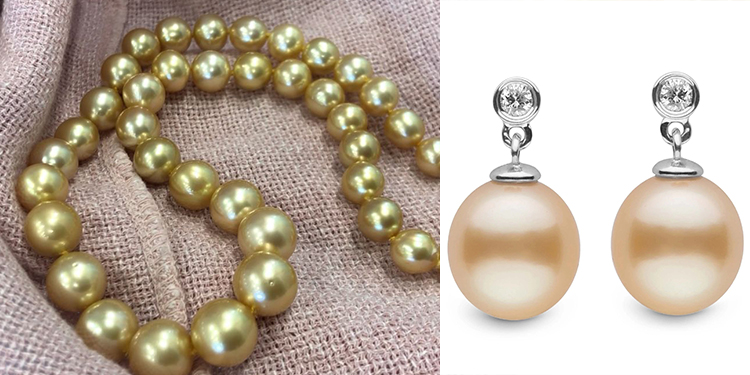
Ask a certifier or appraiser about their training and experience when you get in touch with them. A certified gemologist and numerous years of pearl appraisal expertise are prerequisites for a qualified appraiser.
A trained expert normally inspects the golden pearls as part of the evaluation and certification procedure. According to characteristics including size, color, shape, nacre thickness, and luster, the certifier or appraiser will assess the pearls and produce a thorough report on their worth and quality.
Depending on the intricacy of the assessment or certification, the procedure might take several hours to a couple of days.
Conclusion

There are various important aspects you must take into consideration to distinguish between high-quality and lower-quality golden pearls. Among these are the pearls' size, shape, color, luster, nacre thickness, and surface quality. You may choose top-notch golden pearls with lasting beauty and worth by adhering to the tips in this article.


Leave a Comment